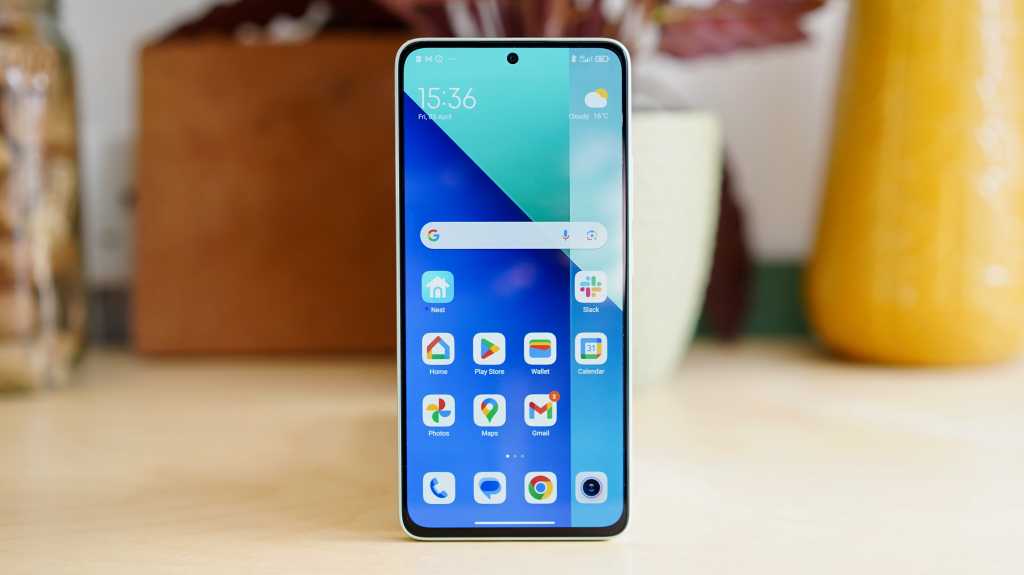Expert’s Rating
Pros
- Significantly cheaper than 5G model
- Strong 120Hz OLED display
- IP54 rated
Cons
- Poor performance
- Obnoxious software
- Unreliable in-display fingerprint sensor
Our Verdict
On the surface, Xiaomi is offering you a tempting deal: drop 5G from the equation, and you can save £80 on the Redmi Note 13 5G. It’s not as simple as that, however, with downgrades to the design and the performance. It remains a solid sub-£200 phone with a particularly good display, but everything else feels at or slightly below par.
Price When Reviewed
Unavailable in the US
Xiaomi’s strategy when it comes to the competitive affordable smartphone market seems to be to flood it with sheer numbers.
For further proof consider the Redmi Note 13, a variant on the already-reviewed Xiaomi Redmi Note 5G that omits – you guessed it – 5G connectivity.
That’s not the only difference to this model, however, which is why it warrants a completely separate review. Divergences in chipset, design, and perhaps most importantly pricing mean that it’s worth considering on its own terms.
One thing’s for sure: if you’re after the best screen possible for under £200, the Xiaomi Redmi Note 13 should be on your list of candidates. Unfortunately, however, some familiar criticisms keep it from being a straightforward recommendation.
Design & Build
- Flat design, but chunkier than 5G version
- IP54 water and dust resistance
- Gorilla Glass 3, not Gorilla Glass 5 like 5G model
The Redmi Note 13 broadly subscribes the same design language as its 5G brother, but it’s far from identical.

Jon Mundy / Foundry
You get the same kind of blandly flat-edged look, with a familiar plastic frame and glossy plastic rear panel. The basic camera layout is the same too, though the elevated plastic mounting plate of the Redmi Note 13 5G is nowhere to be seen.
There’s one clear reason for the latter difference, as far as I can see. The Redmi Note 13 is an altogether thicker phone at 8mm (vs 7.6mm). With a weight of 188.5g, it’s also 14g heavier, though there’s no clear reason for this.
The Redmi Note 13 broadly subscribes the same design language as its 5G brother, but it’s far from identical
Hold the two phones side by side and you’ll notice that this 4G-only model is a millimetre taller and half-a-millimetre wider. The reason for that seems to be thicker bezels, with a noticeably thicker chin making it look less premium than the Redmi Note 13 5G.
Another rollback compared to its better-connected brother is the use of the older and weaker Gorilla Glass 3 rather than Gorilla Glass 5. You still get IP54 water and dust certification, though, which is a step up from previous models.
Strangely, the fingerprint sensor here is an in-display solution rather than the 5G model’s power button alternative. This sounds like an upgrade, but in my experience it very much represents a backwards step.
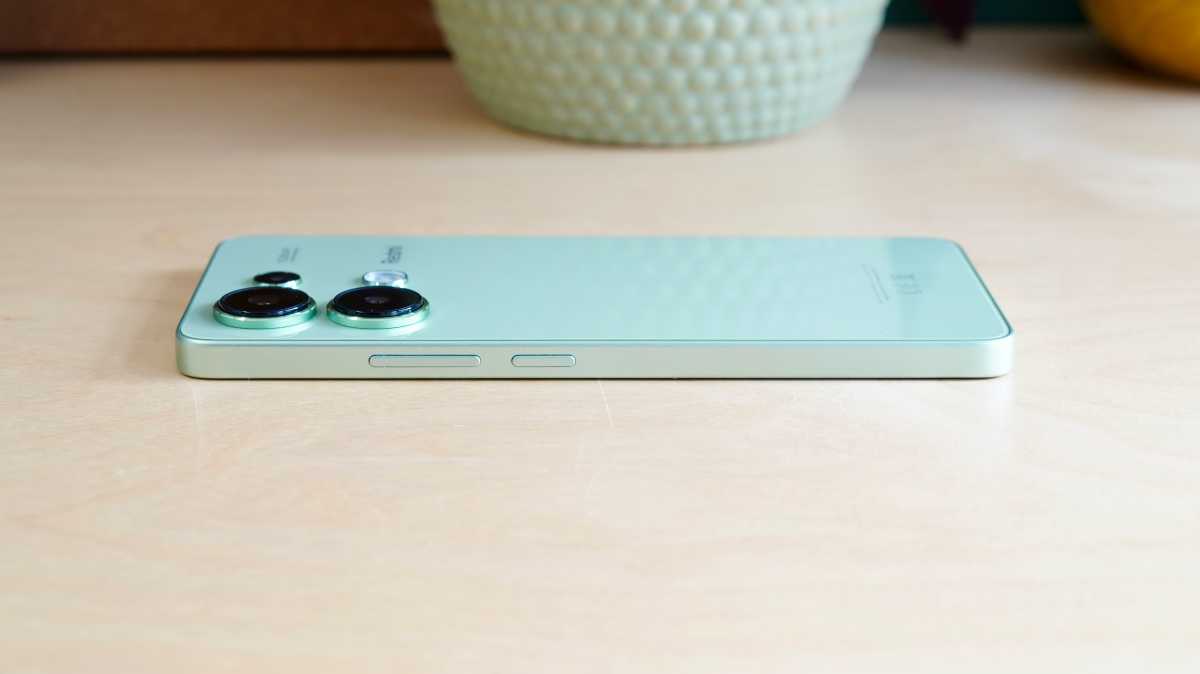
Jon Mundy / Foundry
Even after a couple of pairing attempts, I found that the phone consistently failed to read my right thumb. Weirdly, my left thumb registered relatively reliably. It’s worth noting that I’ve been using two other phones with in-display fingerprint sensors concurrently with the Redmi Note 13 without issue, so there evidently isn’t a problem with my thumb.
Like the 5G model, you get a 3.5mm headphone jack and an IR blaster on the top edge of the phone. The latter lets you control your TV and Hi-fi equipment using the Mi Remote app, which is potentially a pretty handy feature – especially if you’re rocking a lot of older audiovisual gear.
Screen & speakers
- Excellent 6.67-inch Full HD+ OLED
- 120Hz refresh rate
- Stereo speakers
The Redmi Note 13 is a subtly different beast to the Redmi Note 13 5G, but one of the components Xiaomi appears to have left more or less alone is the display. There’s a very good reason for that: this is undoubtedly an excellent display.
This 6.67-inch OLED was arguably the best thing about the 5G model, and so it proves here. It features a solid FHD+ (2400 x 1080) resolution, smooth 120Hz refresh rate and measured top brightness of 454 nits with auto-brightness turned off.
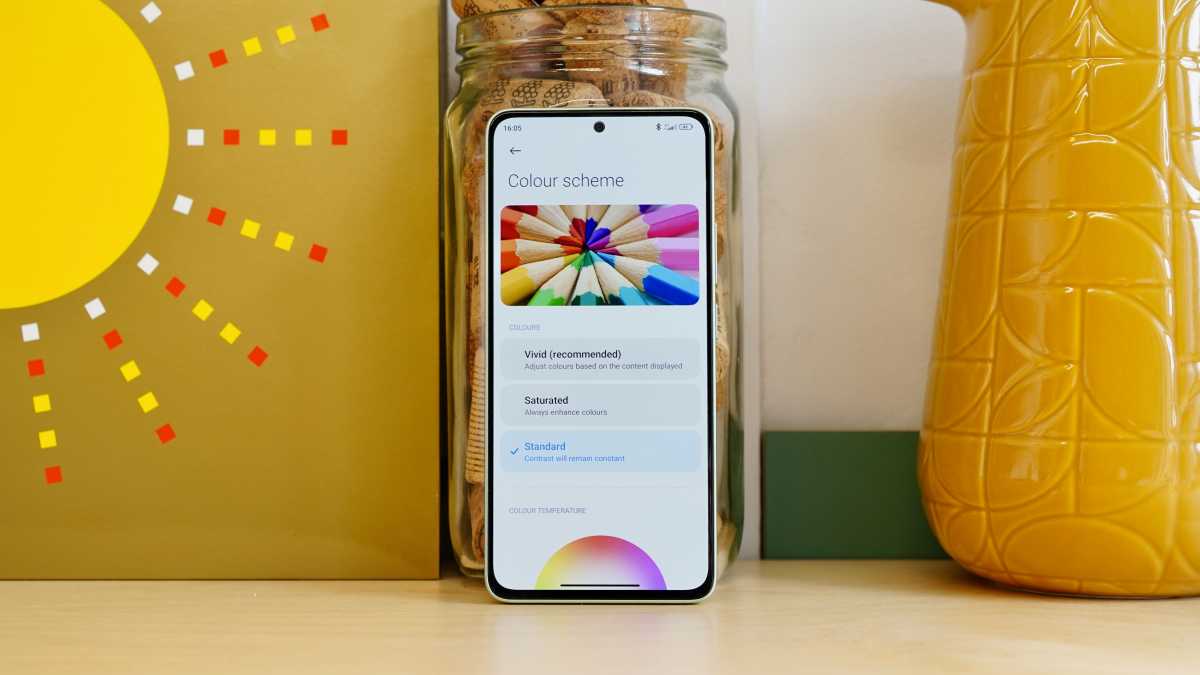
Jon Mundy / Foundry
That’s a tad dimmer than the 5G model, which I recorded as hitting 480 nits, but it’s not a hugely significant difference. It makes for comfortable indoors viewing, while activating auto-brightness will bring the high brightness mode (HBM) into play whilst outdoors. Visibility is good in almost all environments.
You don’t seem to get 5G model’s same level (1920Hz) of PWM dimming, nor its 10-bit colour support. But these are relatively minor concessions, especially in the name of getting that price below £200.
The main appeal of Xiaomi’s screen is how colour accurate it is. Similar to the 5G model, using the more natural-looking Standard colour scheme, I recorded a 100% sRGB gamut coverage and an average Delta E of 0.87 (close to 1 being the ideal).
This is undoubtedly an excellent display
One criticism I had of the Redmi Note 13 5G was its lack of stereo speakers. Bizarrely, the cheaper Note 13 does pack this feature. Go figure.
Whatever the reasoning behind this inclusion, it makes the Redmi Note 13 a better all round media player than its brother. Sound output is nice and clear, and certainly benefits from the stereo separation, though as we’ve come to expect of cheaper phones it lacks any great sense of depth or low-end rumble.
Specs & Performance
- Slow Qualcomm Snapdragon 685 chip
- 6 or 8GB of RAM
- 128 or 256GB of expandable storage
Another fundamental way in which the Redmi Note 13 differs from its 5G brother is the processor that’s been chosen to power it. There’s a Snapdragon 685 running the show here, as opposed to the MediaTek Dimensity 6080 on the 5G version.
This is a more mainstream choice for the 4G model, but not necessarily a superior one. In fact, our benchmark tests reveal that the Redmi Note 13 5G is a much stronger performer in both CPU and GPU terms.
Of course, the 5G model costs at least £50 more. However, both the £199 Samsung Galaxy A15 5G and the £169 Samsung Galaxy A15 also beat the Redmi Note 13 quite handily in each benchmark, as does the £180 Moto G84 5G. The Redmi Note 13 4G is really not a particularly strong performer, even within its price bracket.
Xiaomi Redmi Note 13 benchmarks
Sure enough, it can feel a little sluggish in the hands. Jumping into the settings menu or opening up a new app takes a beat longer than I would like, while hopping between open apps in the app switcher leads to a moment or two of stuttering.

Jon Mundy / Foundry
General navigation is adequate, with slick scrolling that makes the most of that 120Hz refresh rate, and the fingerprint sensor unlocks reasonably snappily too – when it works. But cracks start to appear when pushing the phone beyond these super-basic tasks.
The Redmi Note 13 4G is really not a particularly strong performer, even within its price bracket
Like the 5G model, console racer Wreckfest will run, but you’ll want to drop all the settings down to Low if you want anything resembling a consistent frame rate.
You do get either 6- or 8GB of RAM backing that Snapdragon 685 chip up, which is a solid amount for the money. Storage options, meanwhile, are 128- or 256GB options, with Micro-SD card expansion potential also added in.
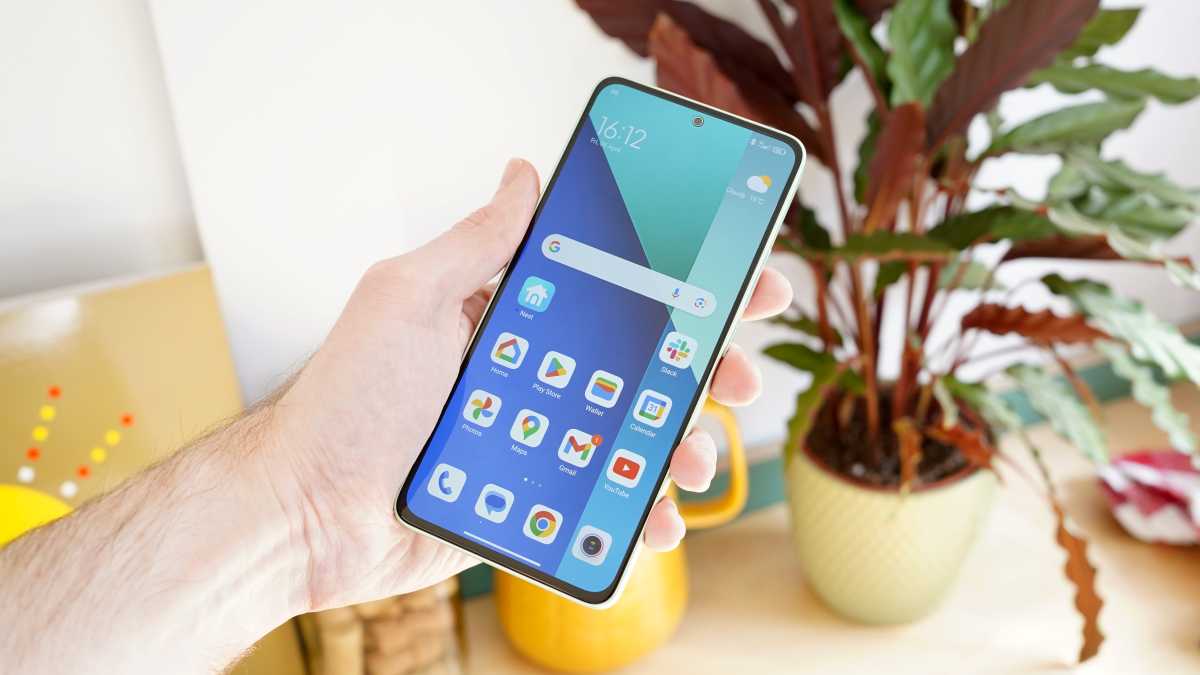
Jon Mundy / Foundry
One critical spec that’s missing here, of course, is 5G connectivity. Contrary to what your network operator might tell you, though, this still shouldn’t be a huge deal for most people. While 5G access has improved, it’s still far from ubiquitous, and getting the full speed and latency benefit isn’t a given, even when it is available.
Camera
- 108Mp main sensor
- Reasonable results in good lighting, terrible night shots
- Decent selfie camera
It seems Xiaomi has installed exactly the same camera system in the Redmi Note 13 as it has in the 5G model, so all of my comments from that earlier review apply here, even with the change in processor.
This set-up is led by the same 108Mp 1/1.67″ main sensor, which seems to be the trusty old Samsung Isocell HM6. It yields predictably solid shots with decent depth and dynamic range. The colours might be a little punchy for some, but exposure and detail are on point.
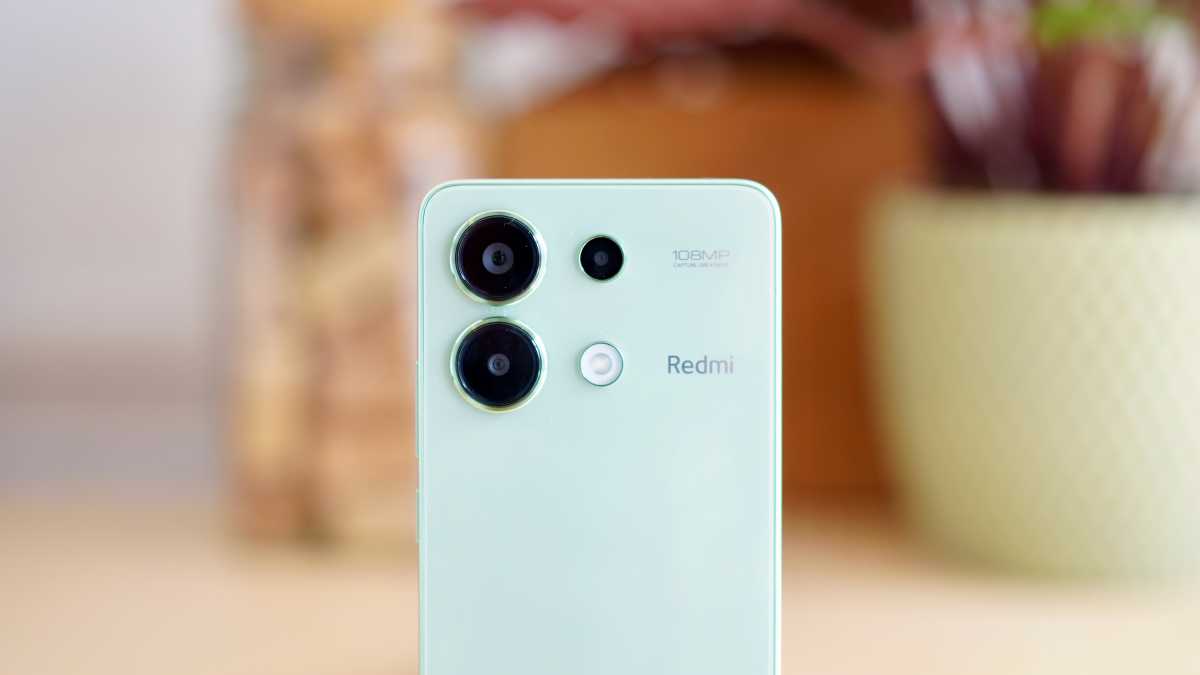
Jon Mundy / Foundry
That’s the case in ideal lighting, at least. As soon as the light drops, the Redmi Note 13’s photographic performance drops off a cliff. Without OIS (optical image stablisation) to keep things steady and extend shutter times, ‘Night mode’ shots are a grainy, noisy mess.
In my Note 13 5G review I floated the possibility that the MediaTek chip might have some image processing limitations, but these Snapdragon 685-driven shots are no better.
Colours might be a little punchy for some, but exposure and detail are on point
Once again, despite the lack of a dedicated telephoto camera, Xiaomi encourages you to zoom at 2x or even 3x, effectively using all those extra pixels to crop in. Any further will really highlight the drop in detail, but I was quite happy with the results at these lower zoom levels.
Where you’ll really notice the drop-off in quality during the day is when you switch to the dedicated 8Mp ultrawide, which brings with it a big loss of both detail and exposure. There’s also a dedicated 2Mp macro sensor on the back, which is just about as pointless as it ever is.
Feed the 16Mp front-facing camera plenty of light, and it’s capable of producing solid selfies. On a slightly drab day, it did wash the colours out somewhat, but it does a reasonable job.
The video offering from that main sensor is very limited to a mere 1080p and 30fps. Meanwhile, the lack of OIS means that you won’t be getting particularly steady shots.
Battery Life & Charging
- 5000mAh battery
- Slightly better battery life than 5G model
- Solid 33W charging
Xiaomi has stuck with a familiar battery and charging setup here. Once again there’s an ample 5000mAh cell, which will power you through a full day of moderate to heavy usage.
On lighter usage days, I got to the end of a day with 50 or even 60% left in the tank. As ever, it all comes down to how much media you consume.
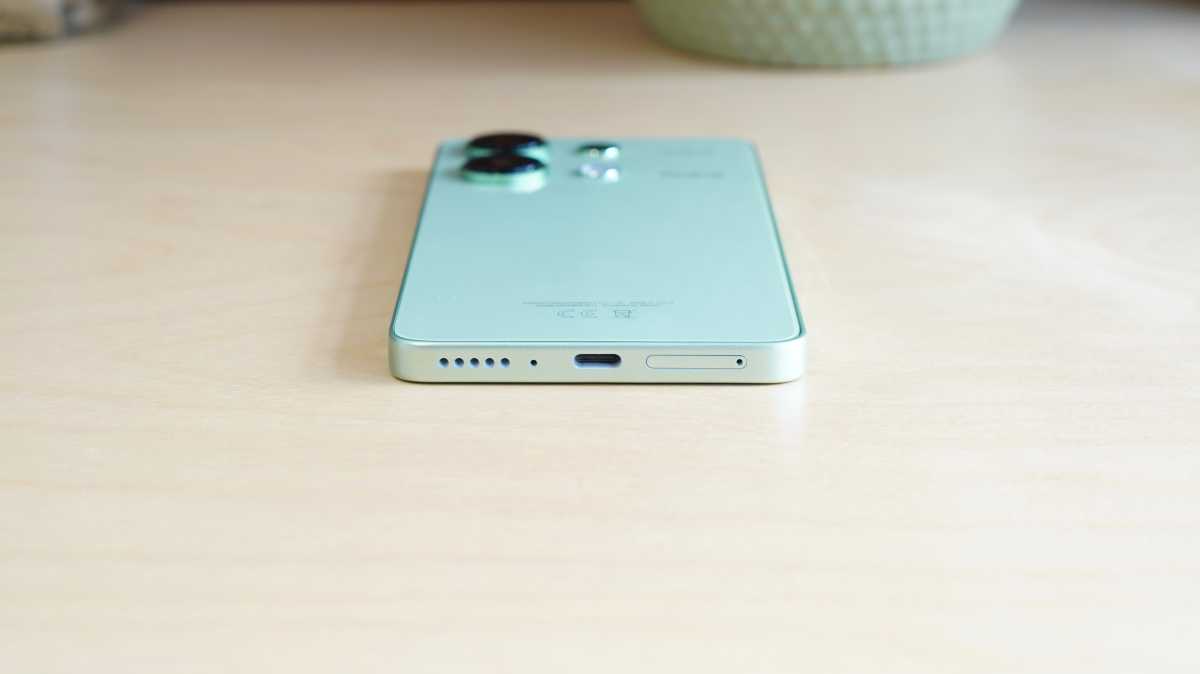
Jon Mundy / Foundry
One interesting point to note is that the Redmi Note 13 performed better than the Redmi Note 13 5G in our usual PC Mark Work 3.0 battery test, lasting a good 50 minutes longer.
This would seem to suggest that the Snapdragon 685 processor runs more efficiently than the Mediatek Dimensity 6080, though you can never count out the deleterious effects of 5G connectivity.
I feel comfortable in stating that the Redmi Note 13 has slightly more dependable battery life than its 5G brother
Whatever the case, I feel comfortable in stating that the Redmi Note 13 has slightly more dependable battery life than its 5G brother.
The charging provision is identical, though. You get the same 33W charger included in the box, which I recorded getting the Redmi Note 13 from empty to 63% in 30 minutes. You can expect a full charge to take a little over an hour, which isn’t bad at all.
Software
- MIUI 14 over Android 14
- Excessive bloatware
- Busy notification menu
Here’s a curiosity for you: while the Redmi Note 13 5G that I reviewed used Xiaomi’s new HyperOS 1.0 UI, the plain Redmi Note 13 uses the older MIUI 14.
They’re both layered on top of Android 14, though, and they both subscribe to Xiaomi’s fussy approach to software. You still get those big charmless icons and an ugly split notification menu, for example, even if a few of the shortcut toggles have been juggled around.
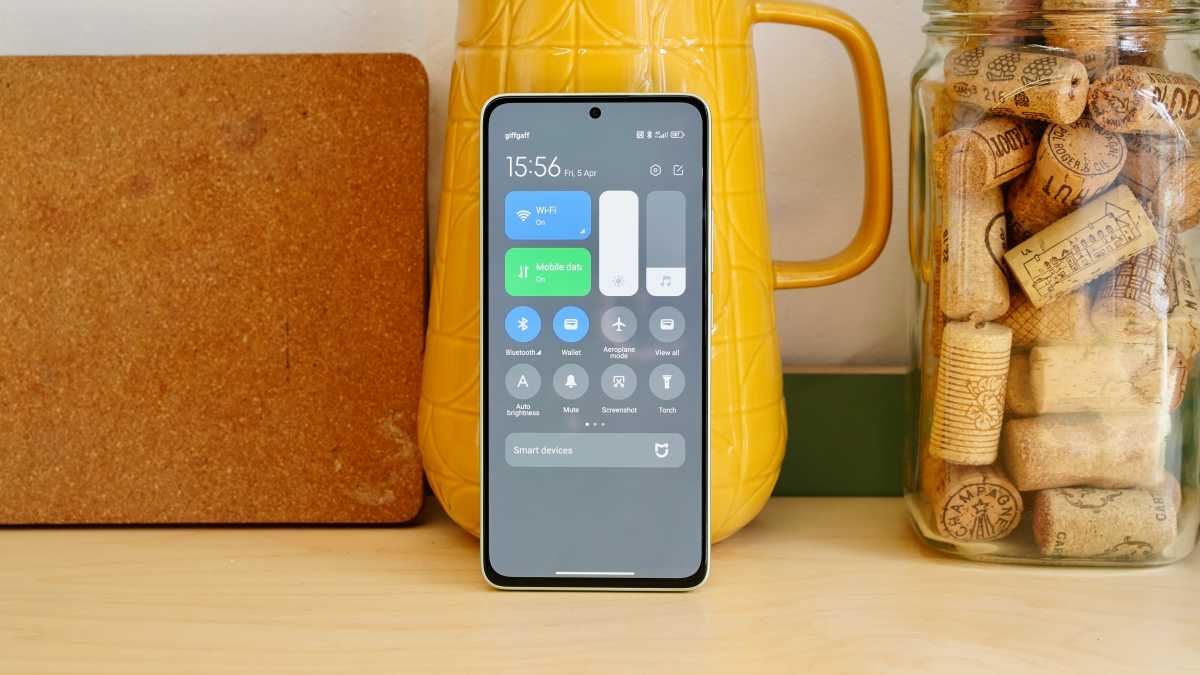
Jon Mundy / Foundry
The latter sit on a horizontally scrolling carousel, rather than all being bundled onto the main menu like in HyperOS. The older…
